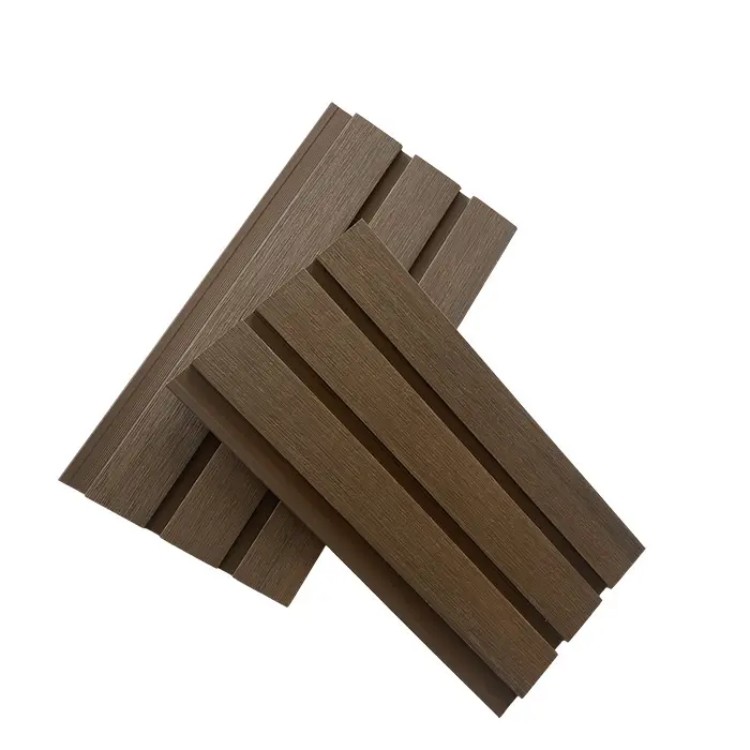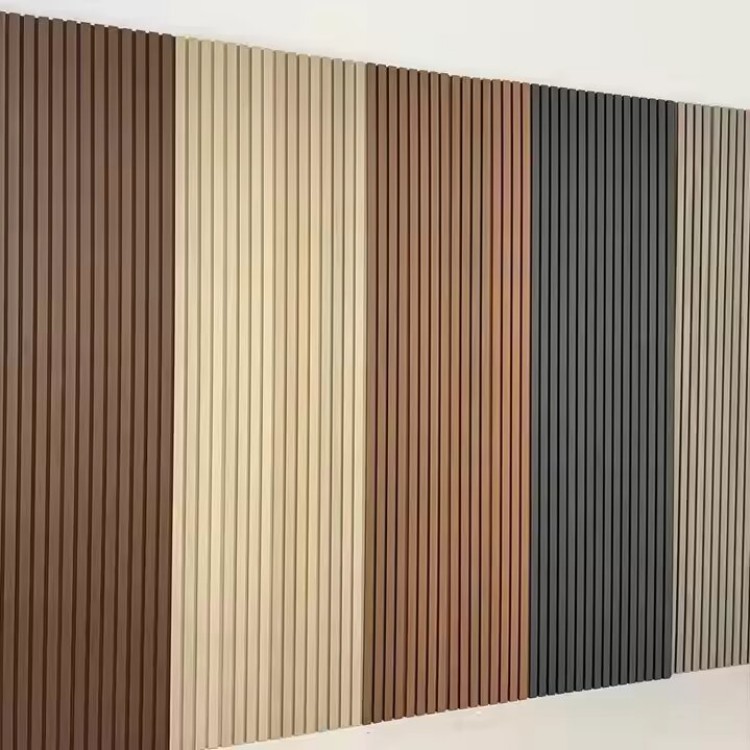Blog
Premium Great Wall WPC Wall Panels: Eco-Friendly, Weatherproof Composite Wood Solutions for Modern Sustainable Building Construction | High-Performance Wood-Plastic Cladding Systems

Why WPC Panels Are Your New Best Friend (Seriously!)
Let me tell you, I used to think “sustainable building materials” meant trading style for a bunch of hippie vibes—like living in a treehouse that’s one rainstorm away from collapse. But then I stumbled onto WPC wall panels during my own backyard renovation fiasco, and wow, did my skepticism melt faster than an ice cube in a heatwave. Premium WPC panels? They’re like the superhero cape your house never knew it needed—eco-friendly, tough as nails, and somehow still easy on the eyes.
The Magic of Modern Composite Cladding
Picture this: You’re trying to build a patio that won’t warp like your aunt’s old wooden fence or crack like last year’s PVC experiment. Enter Great Wall’s WPC cladding. These panels aren’t just “green” because they’re made from recycled wood chips and plastic grocery bags—they’re practically the Swiss Army knife of modern construction. UV rays? Please. Monsoon rains? Bring it on. And the best part? No more weekends lost to sanding, staining, or swearing at splinters.
Ever wondered why hotels and coffee shops these days look like they’ve been photoshopped with perfect woodgrain textures? Spoiler: It’s probably WPC cladding. I’ve seen these panels pull off everything from cozy cabin vibes to sleek urban lofts—all while laughing in the face of termites and mold. And hey, if my neighbor’s “weatherproof” cedar deck turned into a mushroom farm after one soggy summer, shouldn’t we all be asking: What’s the point of “natural” materials if they can’t survive a Tuesday?
Why WPC Panels Are My Go-To for Modern Builds (And Why You’ll Love Them Too)
Last summer, I worked on a coastal home project where the client wanted something beautiful but also bulletproof against salty air and storms. We tried traditional wood cladding first—big mistake. Within months, the boards warped like overcooked noodles. Then we switched to Great Wall WPC Panels, and guess what? Two years later, they still look fresh out of the box. That’s the magic of weatherproof composite panels!
Eco-Warriors in Disguise
First off, they’re eco-warriors in disguise. Imagine giving plastic waste and sawdust a second life—that’s exactly what WPC does. The panels blend recycled wood fibers (about 60% of the mix, from what I’ve seen) with polymers that can be recycled again. It’s like turning trash into treasure, right? Compare that to cutting down forests for timber or using PVC that’ll sit in landfills for centuries. Even my sustainability-obsessed architect friend nods approvingly at this stuff.
Durability That Defies Nature
Durability? Oh, they’re basically the Superman of cladding. I’ve seen these panels shrug off monsoons, scorching UV rays, and even hailstorms without cracking or fading. Traditional wood might last 5–8 years in harsh climates, but WPC cladding? I’d bet my toolbox they’ll cruise past 15–20 years with minimal TLC. No more weekend warrior painting sessions or panic-sealing before winter—just install and forget.
Style Chameleons for Every Project
And here’s a fun twist: they’re chameleons. You want a rustic barn vibe? Go for the cedar woodgrain texture. Prefer a sleek, modern look? Try the matte black finish. I once used their “weathered teak” design for a Bali-style resort, and guests kept asking if it was real reclaimed wood. Joke’s on them—it’s just WPC being fabulous.
Cost Considerations That Make Sense
But wait, what about costs? Let’s get real. Upfront, WPC might cost 20–30% more than basic wood. But factor in zero maintenance, no replacement cycles, and labor savings? You’ll break even faster than you think. One hotel project saved nearly 40% on long-term upkeep by switching to WPC cladding—money they redirected to rooftop solar panels. Talk about a sustainability win-win!
Where WPC Panels Really Shine

You know what’s wild? I used to think “sustainable building” meant sacrificing style for practicality—like wearing scratchy organic cotton shirts. Then I saw my neighbor’s coastal home renovation. Their old wooden siding had turned into a sad, warped mess after years of saltwater spray, but they replaced it with these textured WPC panels that mimic driftwood. Two hurricanes later? Still standing proud, looking like they were installed yesterday. That’s when it clicked: this is how modern construction should work—durable and drop-dead gorgeous.
Real-World Applications
Let’s talk real-world magic. WPC isn’t just for fancy beach houses. Picture this: a café downtown with a burnt-orange WPC facade that glows in the sunset. No peeling paint, no faded colors—just a vibe that pulls in Instagram-happy customers. Or imagine a school courtyard where kids graffiti the walls (oops), but instead of costly repaints, the caretaker just wipes it off with a hose. That’s the kind of low-drama performance these panels deliver.
But wait—here’s where I geek out. Ever seen a WPC-clad balcony in a snow-heavy region? Traditional wood decks there often rot within seasons, but I’ve watched WPC panels laugh off -20°C winters and summer heatwaves alike. One architect friend told me they’re like the “Swiss Army knife of cladding”—equally at home on a mountain lodge, a tropical resort poolside, or that chic rooftop bar everyone’s buzzing about.
WPC vs. Traditional Materials: Let’s Talk Real Talk
Okay, let’s get real for a minute. Ever tried replacing warped wood panels after just three rainy seasons? Or felt guilty tossing PVC scraps into landfills because they’ll outlive your grandkids? Yeah, me too. That’s why I geeked out when I first tested WPC panels on my cousin’s beach house renovation. Spoiler: They’re like the Swiss Army knife of cladding—tough, adaptable, and way kinder to Mother Earth.
The Traditional Wood Dilemma
Think about traditional wood. Sure, it’s got that rustic charm, but let’s be honest—it’s high-maintenance. I’ve lost count of how many clients complained about termites turning their cedar siding into a bug buffet. And don’t get me started on deforestation guilt. Studies show that switching to WPC can save acres of forests annually—imagine preserving a small woodland just by choosing composite panels for a single housing project!
PVC Problems Solved
Then there’s PVC. Look, it’s cheap and waterproof, but recycling it? Good luck. Most ends up in landfills or worse, oceans. Meanwhile, WPC panels are like the overachievers of sustainability. They’re made with recycled wood scraps and plastics (think grocery bags and bottle caps getting a second life), and guess what? They’re fully recyclable again. I’ve seen factories grind up old WPC panels to make park benches—how cool is that?
Environmental Impact Worth Noting
Oh, and about carbon footprints? Traditional materials are like gas-guzzling cars compared to WPC’s electric vibe. Independent researchers found that WPC production emits way less CO2 than virgin PVC or pressure-treated wood. Plus, they’re LEED’s BFF—using them can earn points for green building certifications.
So, next time you’re torn between “classic” and “conscious,” remember: WPC cladding isn’t just a material—it’s a mic drop moment for sustainable design. 🎤
